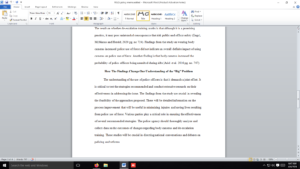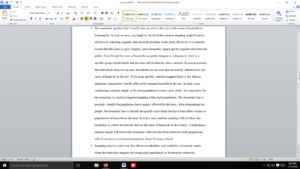Criminal Justice Program Proposal
Continue working on the Criminal Justice Program Proposal for the problem you selected in Wk 1. (See Attached)
Write a 1,050- to 1,450-word proposal that describes the development and design process of your program.
Include the following in Part III of your proposal:
- Identify the target population, and describe how you identified it.
- Locate similar programs, and analyze their policies, procedures, and job descriptions.
- Identify three of the most pertinent policies, procedures, and job descriptions necessary to use in your program.
- Explain how you will address the need for interagency collaboration.
- Develop an implementation plan and timeframe for your program.
- Describe training requirements and materials needed for key personnel.
Format your proposal consistent with APA guidelines.
Answer preview
The targeted population in juvenile criminal justice are youth under eighteen years. Based on research, an estimated 2.1 million kids under 18years are arrested in the United States each year. Most of these youths are arrested and sentenced for running from home, drinking, and other minor issues. Children incarcerated may be subject to various adverse outcomes, including trauma, risk of suicide, or even death. Each prison information system has machines and data which is highly scrutinized and kept in stylized formats (Hetey & Eberhardt, 2018). I identified the problem through data provided by each prison. This data provides a national estimate for the state and convicted federal prison population based on various domains, including incident characteristics, criminal history, rule violation, drug and alcohol use and treatment, family background, and demographic factors.
[1218 Words]

Criminal Justice Program Proposal




